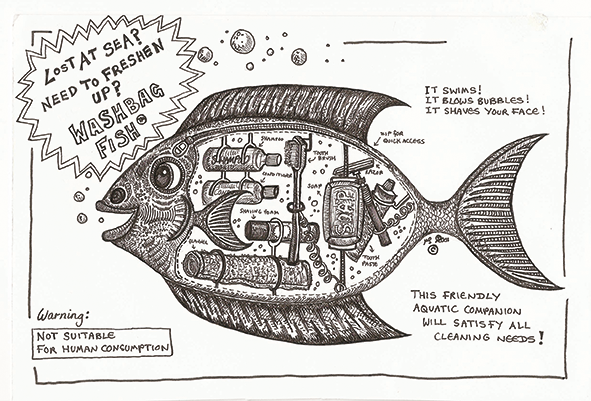Design for sustainability might not be as new as you think. Long before innovative souls were designing lamps based on the amount of red wine they drank last week there was a race of funny little animals living under Wimbledon Common making things out of the rubbish other people threw away. So these academic buzzwords are simply those clever folks with the degrees taking something essentially practical and assigning all kinds of fancy philosophies to it.
Good news everyone! You don’t HAVE to be a scientist, researcher, or an actual Womble, to take advantage of upcycling, recycling or even cycling (you know it’s good for you, and better for the environment). There are groups out there running workshops (possibly in Shropshire) who will teach you how to re-use items you no longer have a use for, and even pick up your unwanted stuff nationally: Wombling.org seems to have the right idea, and is run by a Mr. Not a PhD.
Sometimes, even the developers of giant skyscraper buildings who are building a palace for the mighty Google get it right: The Skip Garden at Kings Cross is a brilliant example of recycling, and generating community space in the drossscape (those incidental spaces that people forget when urban planning). They actually do grow things in skips, old tyres and tubs, even building waste from the surrounding developments. Then they feed it to you in their café. There’s even a cycle-generator to run the watering system. The design of the garden is such that it can be uprooted at a moment’s notice and relocated, thus responding to the demands of the environment, or local county council.
Returning briefly, if I might, to the idea of education – it’s not a BAD THING that academia is taking an interest in saving the world, one lamp at a time, but education on a national, and global scale is more important. There are only 185,535 academics in the UK but 63.7 million people. That’s a (lazy mathematics) percentage of the population! Wow. What about the children? If we tell them to save the world, then we can just sit back and relax, right?
Nope. When I was at school the first Christmas play I remember from middle school (antiquated Warwickshire system) was about the environment, and how we are destroying the world with oil slicks. The tiny mice in the fields (that was me!) asked advice from some passing swallows. Then we all sang a song about the destruction of meadows. Year 6 did something about our oceans, and Year 7 used Michael Jackson’s Bad to illustrate how dropping litter and killing seals was just not on. Year 5 wasn’t that memorable. Sorry, Year 5.
I’ve digressed. Yes – I was one of those children who was asked, very nicely, to save the world. I didn’t. And last time I checked nobody else had either. All these children turned into consumers, hungry, hungry adults who are desperate for a new mobile phone, an Astra GTC with disc brakes (phwoar!) and all of the stuff. All of the things. Some of my Year 4 class went on to do great things: one is a doctor, one went to jail (erm), one is a bloomin’ brilliant social worker in Nottingham (hi!). We all KNOW we should be helping, but there are so many issues to navigate in modern life that saving the world sometimes is at the bottom of the to-do list.
So perhaps I judge ye olde academics too harshly. They have been instrumental in realizing that the thing which is missing from sustainability might be personal value and investment. That spiritual part that makes us appreciate the world around us, the creativity, the belonging. People are more likely to be socially responsible if it affects them directly, but we’ve built a giant bubble of strawberries-out-of-season and new-things-every-six-months. The bigwigs aren’t helping though – some argue that there is planned obsolescence in our technology, so even if we want to use the same mobile phone for 20 years it will never last, or, it won’t work on the next big thing in SIM cards or networking.
In my nascent view of the world, I see those who design for sustainability as Mad Max-proofing the future. In the frightening dystopia where Tina Turner rules the endless desert of destruction, Dunne & Raby’s design fictions might be of use. Who hasn’t secretly planned a big house in the country surrounded by spiky fences to keep out the hordes of zombies and vigilante survivalists? A couple of years ago, my uncle suggested stockpiling tins as he was pretty sure society would collapse over the coming summer (it didn’t), but the thought was enough to send me running to the laser eye clinic to correct my woeful myopia rather than book a holiday (there won’t be any more Asda Contact Lenses if Tina Turner is Queen).
Having owned and used the same laptop for 7 years, I had to face clients’ panicked faces when they realized their £500 design job was locked into an ancient machine that took 20 minutes to turn on. It finally got too much when I managed 3 cups of tea and a doing a whole bowl full of a washing up before I could open a program, and I felt obliged to purchase a new machine as part of my infiltration of academia. Yes, I’m one of THOSE people, but I’m going to repair my motorcycle cover with a roll of Duck Tape, grow tomatoes in the back yard, and keep using my current mobile until its primary use is as a coaster for my glass full of red wine.
